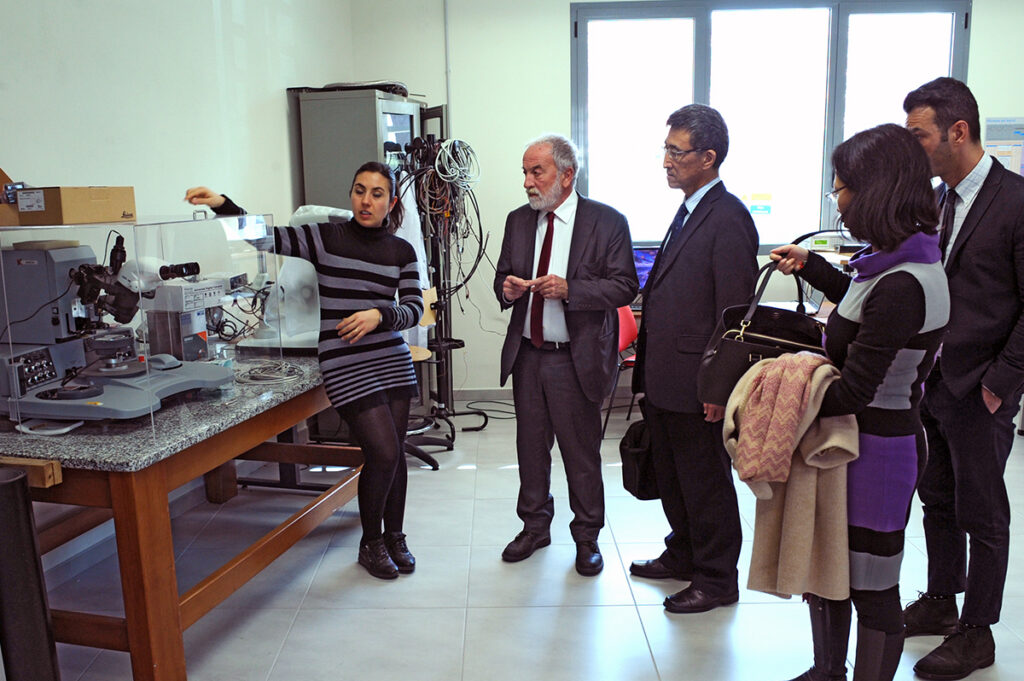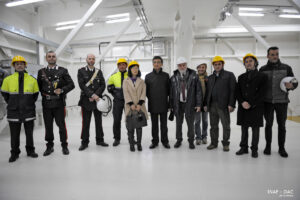In the context of an increasingly close synergy between Sardinia and China in research and innovation, the scientific advisor of the Chinese Embassy, Dr. Cao Jianye, accompanied by the First Secretary for Science and Technology, Dr. Gai Hongbo, visited Sardinia in recent days. He wanted to meet the Vice President of the Region, Raffaele Paci.
“The Region supports the innovation process with many tools, which is not only applied to high-tech sectors,” said Paci. “We are aware that a massive dose of technological innovation, supported by adequate research, allows for rapid growth and development.”
The collaboration between China and Sardinia has already materialized with the Huawei Joint Innovation Center in Pula, inaugurated in December, where the scientific advisor of the Embassy and his delegation made the second stop of their visit.
“An important reality, an investment that Huawei chose to make in our region due to the strong skills it found and the concrete possibility of continuing research in the name of innovation, and we want to strongly focus on this,” Paci recalled. “We reiterated this to your president Xi Jinping during his visit to Sardinia, and on that occasion, as we had already done during the mission in China, we had the opportunity to discuss our other strengths on which we can build an increasingly solid relationship with your country. I think of food safety, environmental policies and protection, new technologies for CO2 capture, tourism, and research for Smart & Safe Cities.”
Another sector where new research collaboration can be initiated is radio astronomy.
 The third stop of the visit was the Astronomical Observatory of Cagliari, with its technological development laboratories (in the image, engineer Adelaide Ladu illustrates one of the instruments used in the Microwave Laboratory) and the Sardinia Radio Telescope (SRT), an international reference point for research in the field. “A solid reality with important prospects, where experimental work and continuous innovation can, even with the help of international partners, ensure benefits in terms of employment and development,” Paci emphasized.
The third stop of the visit was the Astronomical Observatory of Cagliari, with its technological development laboratories (in the image, engineer Adelaide Ladu illustrates one of the instruments used in the Microwave Laboratory) and the Sardinia Radio Telescope (SRT), an international reference point for research in the field. “A solid reality with important prospects, where experimental work and continuous innovation can, even with the help of international partners, ensure benefits in terms of employment and development,” Paci emphasized.
Scientific advisor Cao Jianye visited the telescope and the infrastructures under completion, accompanied by the president of INAF Nicolò D’Amico, the director of the astronomical observatory Andrea Possenti, and the mayor of San Basilio Albino Porru, who hosted the visit.
 “It is certainly a source of satisfaction to see China’s interest in the research and development investments taking place in Sardinia, and particularly in our research infrastructures,” adds Nichi D’Amico. “In the field of radio astronomy and the development activities of the Sardinia Radio Telescope and the European VLBI network, a fruitful collaboration with Chinese colleagues has been in place for several years, which has been further consolidated recently with the participation of the two countries in the international Square Kilometer Array (SKA) project, for which, thanks to funding under Law 7, we have set up a demonstrator at the SRT site, the Sardinia Array Demonstrator project.”
“It is certainly a source of satisfaction to see China’s interest in the research and development investments taking place in Sardinia, and particularly in our research infrastructures,” adds Nichi D’Amico. “In the field of radio astronomy and the development activities of the Sardinia Radio Telescope and the European VLBI network, a fruitful collaboration with Chinese colleagues has been in place for several years, which has been further consolidated recently with the participation of the two countries in the international Square Kilometer Array (SKA) project, for which, thanks to funding under Law 7, we have set up a demonstrator at the SRT site, the Sardinia Array Demonstrator project.”
Is China starting to speak a bit of Sardinian?